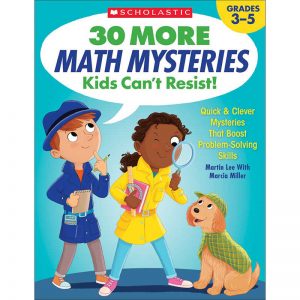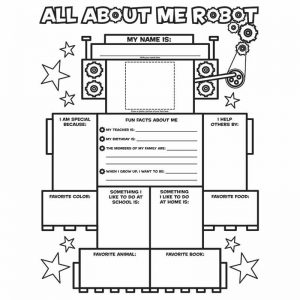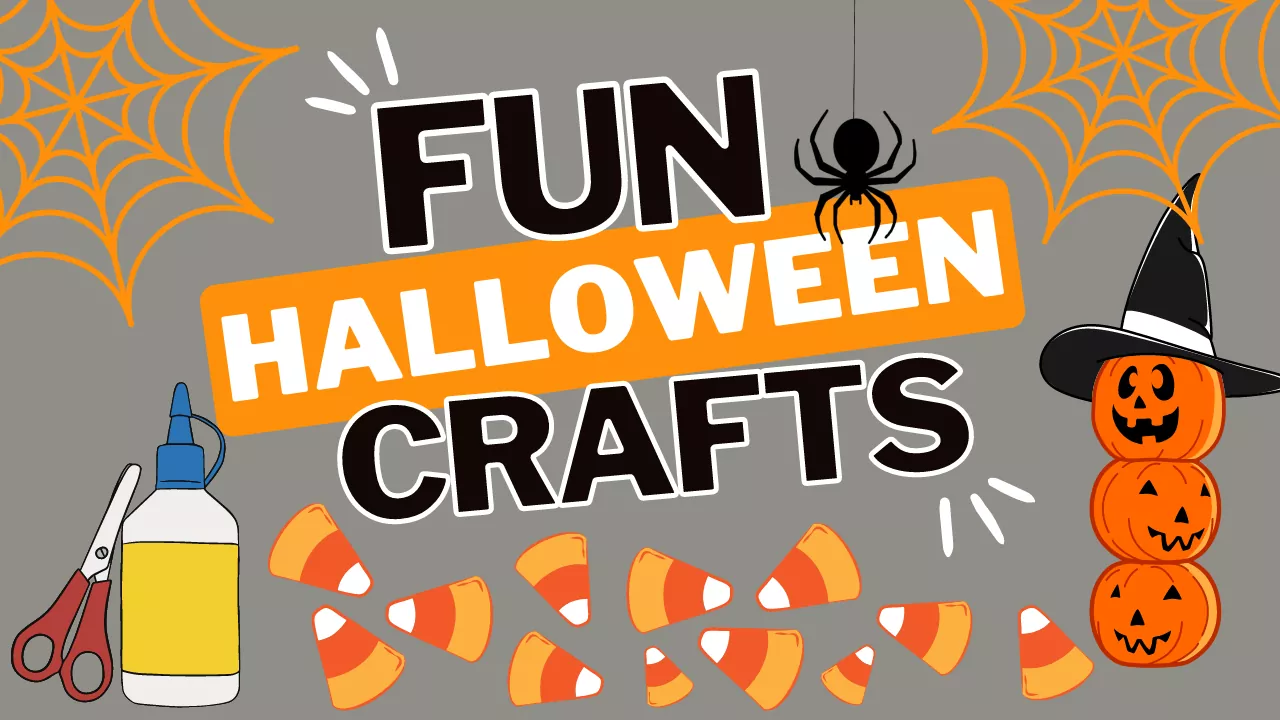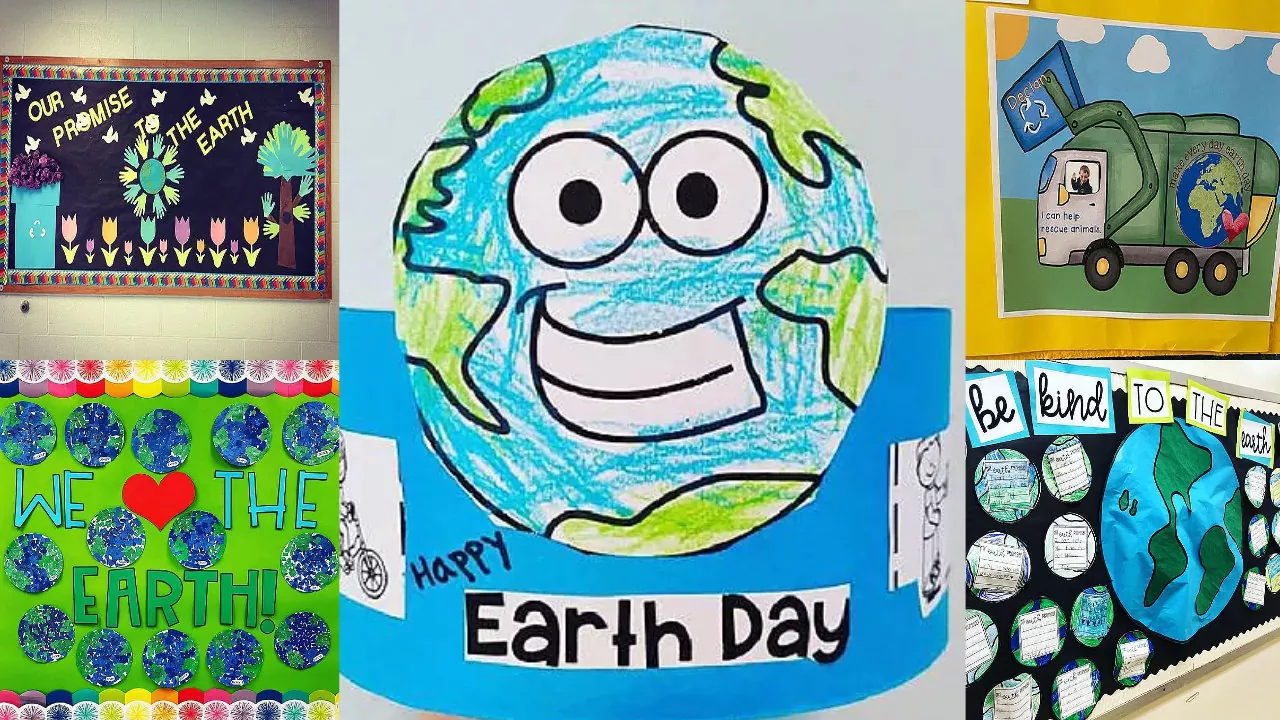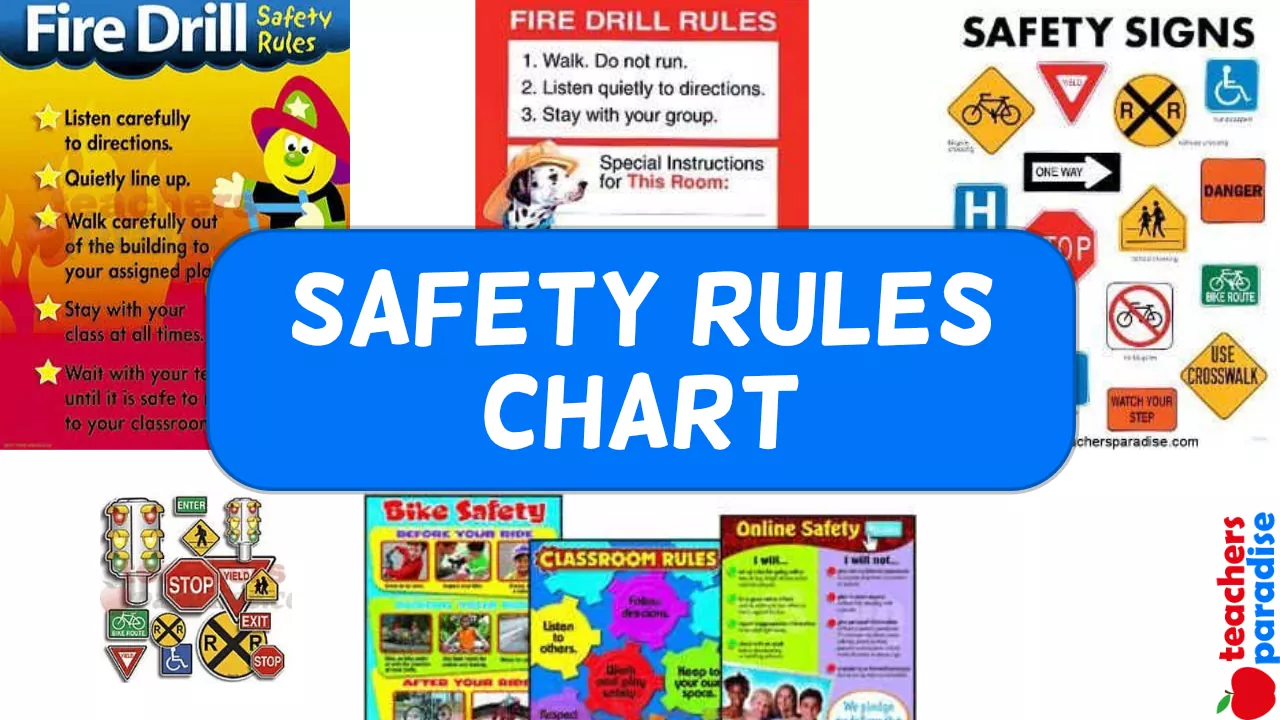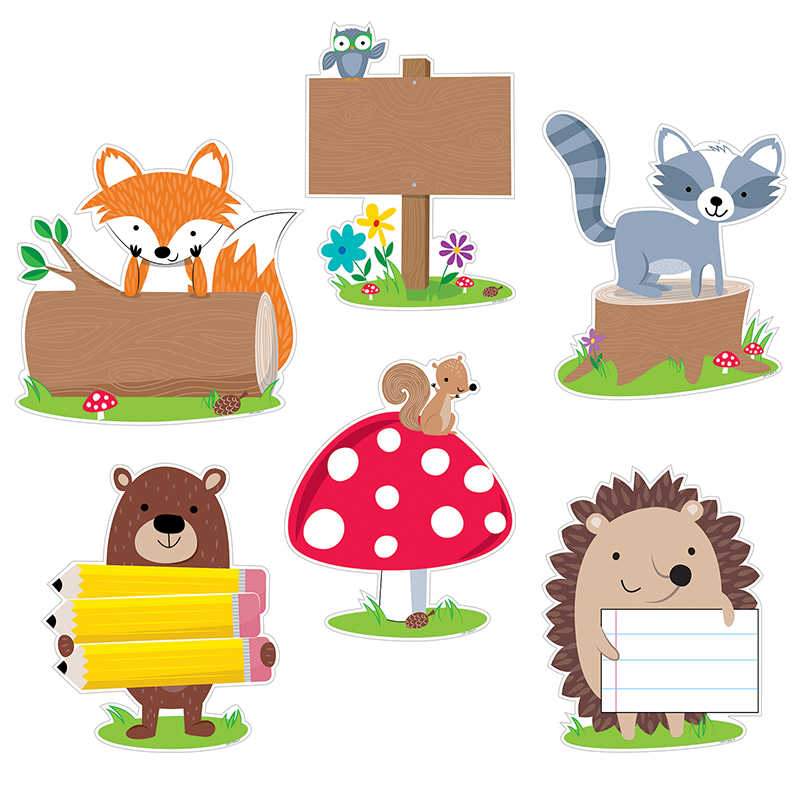Getting to Know Shapes Worksheets
Investigating Two- and Three-Dimensional Shapes
Investigating Two- and Three-Dimensional Shapes
Activities in this section engage children in building lively word walls, creating rhyming math mini-books, playing games, singing songs, sharing stories, solving problems, and more. In the process, children will investigate two- and three-dimensional shapes—naming and describing them, discovering ways in which they are alike and different, and exploring what happens when they put shapes together and take them apart.
Skills and Concepts Supported by the Activities in This Section
- recognizing and naming shapes from different perspectives
- building with shapes
- drawing shapes
- comparing and contrasting shapes
- sorting shapes
WORKSHEET & Sample PDF Activity
[adinserter block=”2″]
Sample PDF Activity
[adinserter block=”3″]
- describing attributes of shapes, including those with lines of symmetry
- patterning with shapes
- taking apart shapes and putting them back together
- relating ideas in geometry to ideas in number and measurement
- recognizing geometric shapes and structures in the environment
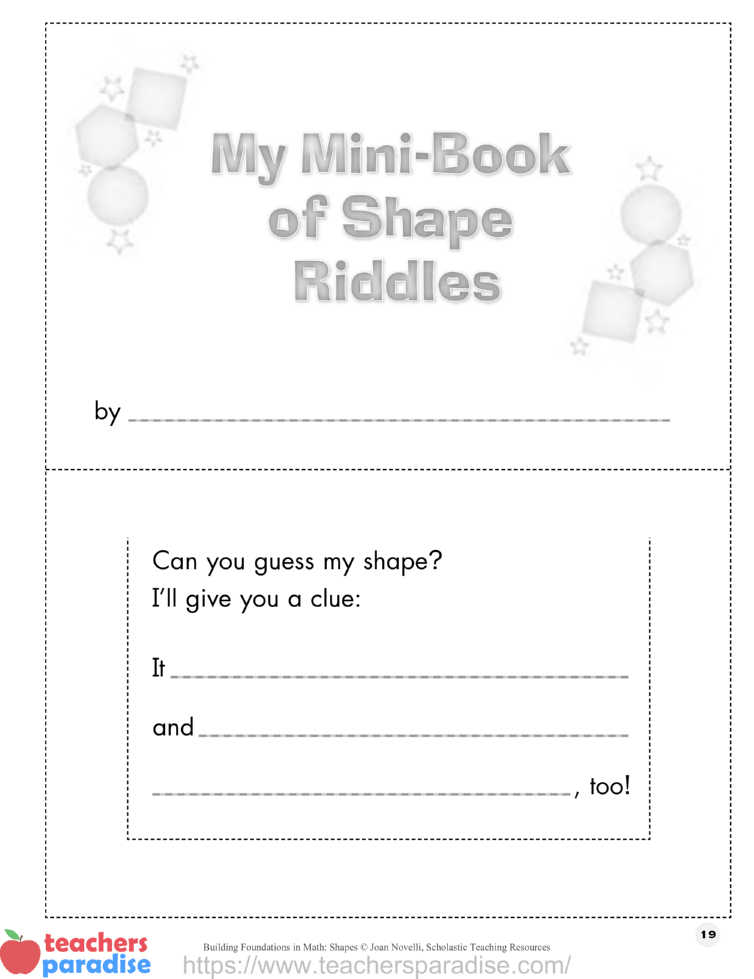
As children build with blocks again and again, they develop understandings of relationships among shapes. Two square blocks fill the same space as a rectangular block. Two triangles placed side to side can make a square. A cylinder has a circle on each end. Children develop a foundation for understanding symmetry as they construct a building, carefully adding to one side what they place on the other. As you observe children in such activities, engage them in conversations that develop math understandings and related vocabulary. Sample discussion starters follow:
- What is the name for the shape of that block? What do you know about this shape?
- What other blocks have something in common with this one? How are they alike?
- What two blocks could you put together to equal the shape and size of this block?
- If you wanted to build the tallest tower possible, what blocks would you choose? Why?
- Which blocks do you think make a good base for your building? Why?
- How are these blocks like shapes you see in buildings?
TEACHING TIP
Depending on children’s ability level, you may want to introduce the mathematical term rhombus. Explain that a rhombus has four sides that are all the same length. Squares and diamonds are both rhombuses: A diamond is like a square that stands on one of its corners. Encourage children to explore the room to find the two kinds of rhombuses.
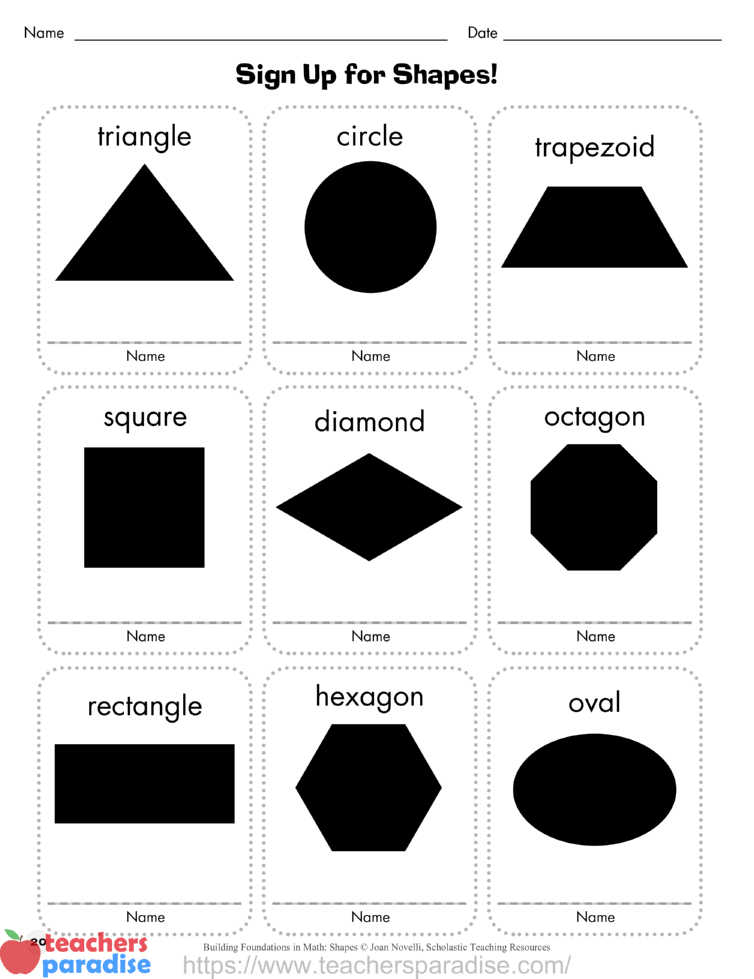
Word Wall of Shapes – Shape Words
This picture word wall helps teach shape names and reinforce math vocabulary.
- Write the name of each shape you are teaching on a separate sentence strip and add a corresponding picture. Display the sentence strips on a wall, leaving plenty of room around each one. Reinforce properties of each shape by asking questions, such as: “How many sides does this shape have? How many more sides does this shape have than that shape? Which shapes have sides? Which don’t?”
- Pass out large index cards. On each card, have children draw an item or glue on a magazine picture that represents a shape, write the shape name, and sign their name. They may also attach an actual object, such as a sticky note to represent a square.
- Display each shape card with the corresponding sentence strip on the word wall. Use the word wall to reinforce vocabulary for and properties of shapes. Help children notice the different sizes and orientations that a shape can have. For example, a rectangle can be seen in a small chewing gum wrapper as well as the side of a large building.
- Add to the word wall as children discover new examples of the displayed shapes and as you introduce new shapes. To reinforce the association between a shape, its name, and spelling, point out each word as you use it in conversations and lessons.
TEACHING TIP
As children create new pages for their lift-the-flap mini-books, invite them to read them aloud during designated times, such as the morning meeting. The class will enjoy listening to clues and guessing the shapes.
My Mini-Book of Shape Riddles – Attributes
As children’s shape vocabulary grows, so will this rhyming lift-the-flap minibook! Predictable text builds word recognition and fluency skills, too.
- Before children begin to work on their mini-books, show them how to make the pages by following these steps:
- Cut apart a copy of the cover and riddle template on page 19. Then cut along the dashed lines around the riddle to create a flap.
- Glue only the edges of the riddle template to a half-sheet of white paper, leaving the flap free to open and close.
- Read the riddle and complete it by writing in words that describe a selected shape.
- Draw the shape and write its name under the flap.
- Give children copies of page 19 and have them make mini-book pages. Let them make pages for all the shapes they want to include in their mini-books.
- When finished, help children stack all their pages, place the cover on top, and staple to bind. Then have them write their name on the cover. Children will enjoy sharing these interactive mini-books with their classmates and families.
“Mister Sun” Circles – Circles & Spheres
Mister Sun
Oh Mister Sun, Sun,
Mister Golden Sun,
Please shine down on me.
(raise arms above head to form circle)
Oh Mister Sun, Sun,
Mister Golden Sun,
Hiding behind a tree.
(hide arms behind back)
These little children
Are asking you
To please come out
So we can play with you.
(slowly bring arms back up)
Oh Mister Sun, Sun,
Mister Golden Sun,
Please shine down on me!
(raise arms above head to form circle)
—Author Unknown
Literature Link
Shapes, Shapes, Shapes by Tana Hoban (William Morrow, 1986).
In this wordless book, readers discover shapes in a lunchbox and on a tablecloth, in an egg and an orange. After sharing the book, invite children to take photos or draw pictures of objects around the classroom or school that represent different shapes. Assemble the pictures into a class concept book for children to explore on their own, with partners, or at home with their families. (On an extra page in the front or back of the book, draw and label the shapes children can look for within the various pictures.)
This traditional song invites children to use their arms to represent the shape of the sun high above their heads, as they sing about it shining down.
- Copy the song onto chart paper. Review the arm positions with children (as indicated in each verse).
- Sing the song together, pointing to the words and using the arm movements to show the sun shining down, hiding, and then coming back out.
- After singing, compare the shape children make with their arms (a circle) to the actual shape of the sun (a sphere). You might show them a ball to represent a sphere. Discuss how these shapes are alike and different.
Literature Link
Sun Song by Jean Marzollo (HarperCollins, 1995).
Watch the sun come up with a warm and cheery story that is just the right way to begin any day. Let children revisit pictures of the sun and look for similarly shaped objects in the classroom. Guide a discussion on how spheres and circles are alike and different.
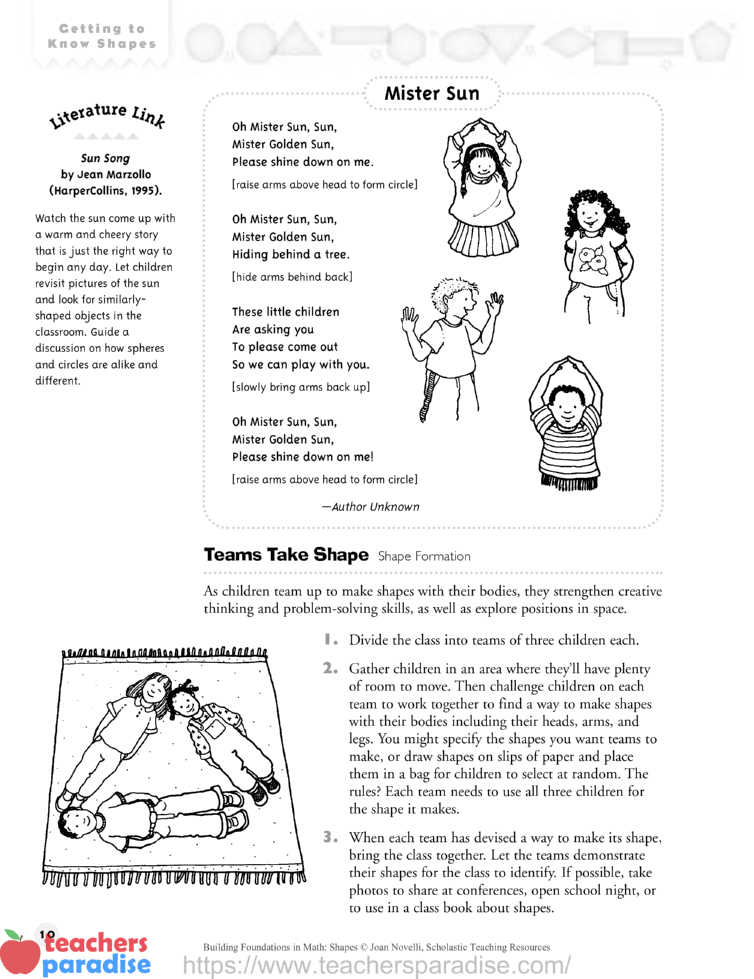
Teams Take Shape – Shape Formation
As children team up to make shapes with their bodies, they strengthen creative thinking and problem-solving skills, as well as explore positions in space.
- Divide the class into teams of three children each.
- Gather children in an area where they’ll have plenty of room to move. Then challenge children on each team to work together to find a way to make shapes with their bodies including their heads, arms, and legs. You might specify the shapes you want teams to make, or draw shapes on slips of paper and place them in a bag for children to select at random. The rules? Each team needs to use all three children for the shape it makes.
- When each team has devised a way to make its shape, bring the class together. Let the teams demonstrate their shapes for the class to identify. If possible, take photos to share at conferences, open school night, or to use in a class book about shapes.
Presto Shape-O! – Attributes
After children make shapes with their bodies (see “Teams Take Shape” on page 10), challenge them to do the same with a piece of string. It might not take magic, but using a mysterious cloth and magic wand will add special effects as children demonstrate their skills.
- Give each pair of children a length of string about 36 inches long.
- Have the partners work together to shape the string into a triangle. Can they think of a way to make a square? How about other shapes?
- As the partners form their shape, have a volunteer assistant cover their hands with a large black cloth, wave a “magic” wand over it, and chant something suitably magical.
- When the pair has formed the shape, have the assistant lightly tap the cloth with the wand and then remove it with a flourish to reveal the shape.
- After all the pairs have performed their “magic,” discuss the different solutions they found for forming each shape.
TEACHING TIP
Use a copy of the grid on page 20 as a template for making signature sheets to reinforce new shapes. Simply mask some of the shapes and replace them with the new shapes you want children to work with.
Sign Up for Shapes! Shape Recognition
Children collect shapes and signatures with this activity.
- Copy a class set of the record sheet on page 20. Cut out the same shapes from tagboard. (You can use enlarged copies of the shapes on the record sheet for templates.) Make sure there is a shape for each child (duplicates are fine).
- Tape a shape to each child’s shirt (like a nametag) or string it on yarn to make a necklace. Give each child a copy of the record sheet. Explain that children need to find a classmate who is wearing each shape on the record sheet and have that child sign on the appropriate line.
- As children search, encourage them to name each shape they find.
Table of Contents
About This Book – 4
Research Connections – 4
Assessing Learning – 5
Encouraging Understanding – 6
Supporting the Standards – 6
Getting to Know Shapes – 7
Word Wall of Shapes (shape words) – 8
My Mini-Book of Shape Riddles (attributes) – 9
“Mister Sun” Circles (circles & spheres) – 9
Teams Take Shape (shape formation) – 10
Presto Shape-O! (attributes) – 11
Sign Up for Shapes! (shape recognition) – 11
Square, or No Square (categorizing) – 11
On a Roll (attributes) – 12
Shape a Snake (patterns) – 13
Headline Cone Hats (shape formation & identification) – 14
Shoe Box Shape Center (shape formation) – 15
Transition Time Trace-and-Tell (shape recognition) – 15
Peek-In Pyramids (composing shapes) – 15
Triangle Put-Together (decomposing & composing shapes) – 16
Shape Surprise Center (reproducing shapes) – 17
Tangram Storytelling (composing shapes) – 17
Mirror-Image Math (symmetry) – 18
Reproducible Pages – 19–23
Spatial Sense – 24
Sight Word Builders (positional words) – 25
Simon Says! (directional & positional concepts) – 25
Location Mini-Book (location) – 26
Mini Picture-Word Puzzles (positional concepts) – 26
Spatial Sense Safari (positional concepts) – 27
Obstacle Course Geometry (following directions) – 27
Tops and Bottoms Garden (positional concepts) – 28
From Here to There (mapping locations) – 28
Sundae Assembly (positional & directional concepts) – 29
My I Spy (coordinate geometry & visual skills) – 29
Find the Bone (coordinate geometry) – 30
Reproducible Pages – 31–35
A World of Shapes – 36
Shapes at School, Shapes at Home Booklet (shape recognition) – 37
The Poetry of Shapes (representation with shapes) – 37
To Market, To Market (identifying shapes in context) – 38
Math in My Lunch! (shape identification) – 38
Dominoes Shape Up (matching shapes in context) – 39
Lift-the-Flap Castle (shapes in context & shape vocabulary) – 40
Balls and Rings (3-D circular shapes) – 40
Shapes and Signs (shape recognition) – 41
Architects at Work (3-D representations) – 41
Geometry Zoo (representation with shapes) – 42
Reproducible Pages – 43–48

